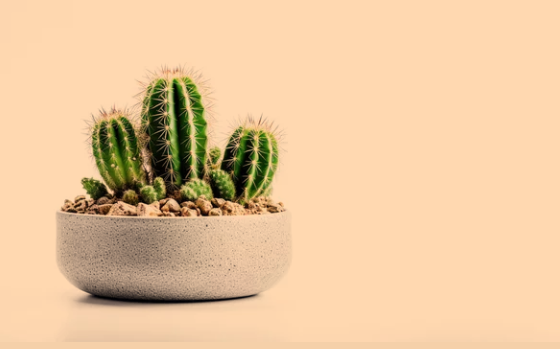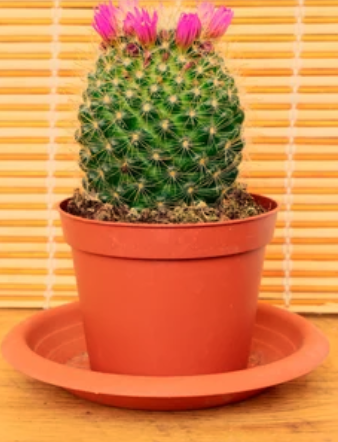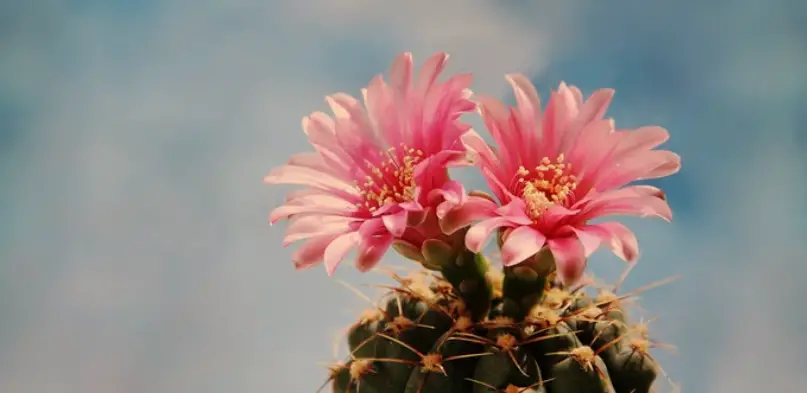There are a wide variety of Cactus flowering plants in the world, but few are as resilient and distinctive as cacti. From scorching deserts to rocky cliffs, these extraordinary succulents have evolved to survive in some of the toughest settings on Earth.
The capacity of cacti to grow stunning, colorful blossoms despite their harsh environments is what makes them so fascinating. We’ll delve into the fascinating world of cactus flowering plants in this blog post and learn the specifics that make them so special.
Cactus Basics

Let’s start with the fundamentals before delving into the fascinating realm of cactus flowers. There are about 1,750 species of flowering plants in the Cactaceae family, which includes cacti. The bulk of them are native to the Americas, notably in dry areas of North and South America. Cacti are unique among plants because of how well they adapt to water constraint, allowing them to survive in some of the world’s driest environments.
Water-Storage Superstars
The ability of cacti to store water in specialized tissues, such as their thick, fleshy stems, is well known. Because of their ability to store water, cacti may thrive in hot, dry climates with little rain. Certain cacti have the ability to store up to 90% of their weight in water, which they can draw on to survive dry spells.
Unique Structures
The spines on cactus are one of their most recognizable characteristics. In addition to minimizing water loss by creating shade, these modified leaves or stems also help to ward off herbivores and provide structural support. Cactus spines come in an incredible range of sizes, hues, and shapes, making cactus identification dependent on them.
The Miracle of Cactus flowering plant

Cacti are praised for their ability to survive, but what really captures people’s attention is their incredible capacity to produce beautiful blossoms. Cactus flowers are like nature’s secret gems; they frequently show up unannounced in the dry environments they call home. Let’s go deeper into the fascinating world of cactus flowers.
Unique Floral Structures
There is a dizzying variety of forms, dimensions, and hues for cactus flowers. They are extremely distinctive due to their structural makeup. Cacti have a modified reproductive structure known as the areole, from which its spines, branches, and flowers originate, in contrast to many other flowering plants. They stand out in the plant realm thanks to their unusual structure.
Pollination Strategies
To survive in hostile surroundings, cactus flowers have developed clever pollination techniques. While some cacti are dependent on the wind or self-pollination, others are pollinated by specialized insects like bees and bats. The saguaro cactus and the long-billed yucca moth have a rare co-evolutionary connection in which the moth pollinates the cactus while laying its eggs in its blossoms, making this one of the most well-known instances of cactus pollination.
Short-Lived Beauty
Famous for their fleeting beauty are cactus flowers. While some flowers bloom for several days, others might only do so briefly. The fascination of cactus is increased by this transitory beauty, which makes seeing their blossoms all the more memorable. The annual flowering of their favorite plants, a fleeting but wonderful event in the cactus world, is eagerly anticipated by many cactus lovers.
Diverse Cactus flowering plant Examples

Cactus flowering plant
Cactus flowers come in a staggering variety of hues, forms, and sizes. In order to better illustrate the enormous variation present within this remarkable group of plants, let’s look at a few specific examples.
Queen of the Night (Epiphyllum oxypetalum)
The Queen of the Night, also known as the Night-Blooming Cereus, is a striking cactus species known for its large, fragrant white flowers that bloom only at night. Native to Central America, these flowers are pollinated by nocturnal moths, and their ephemeral beauty has captured the fascination of many plant enthusiasts.
Barrel Cactus (Ferocactus)
Barrel cacti, a group of approximately 30 species, are known for their round, cylindrical shape and bright yellow or red-orange flowers. These cacti often display a crown of flowers around their tops, creating a visually stunning display that attracts pollinators like bees and birds.
Saguaro Cactus (Carnegiea gigantea)
The iconic saguaro cactus is synonymous with the American Southwest and is well-known for its towering stature and white, waxy flowers. These large, showy blossoms can reach up to 3 inches in diameter and provide a vital food source for birds and insects during the hot desert summers.
Fishhook Cactus (Mammillaria)
Fishhook cacti, part of a large genus of over 200 species, are named for their hooked spines and tiny but vibrant flowers. These cacti produce colorful blooms in shades of pink, yellow, and red, often in clusters near the top of their stems.
Prickly Pear (Opuntia)
Prickly pear cacti are perhaps the most recognizable cacti in the world, with their flat, paddle-shaped stems and abundant yellow, red, or orange flowers. These cacti are not only known for their beauty but also for their edible fruits, which are enjoyed by both humans and wildlife.
Caring for Cactus Flowers

If you’re lucky enough to have cacti in your garden or home, you may be interested in caring for their flowers to ensure their longevity and health. Here are some essential tips for nurturing cactus flowers:
Adequate Sunlight
Cacti require plenty of sunlight to thrive and produce flowers. Place your cacti in a location where they receive at least six hours of direct sunlight per day. If you’re growing cacti indoors, choose a sunny windowsill or provide supplemental grow lights.
Well-Draining Soil
Cacti prefer well-draining soil to prevent waterlogged roots. Use a specialized cactus mix or amend regular potting soil with sand or perlite to improve drainage. Ensure your pots have drainage holes to allow excess water to escape.
Minimal Watering
Overwatering is a common mistake when caring for cacti. Water sparingly, allowing the soil to dry out between waterings. During the flowering season, you can increase watering slightly to support flower production but still be cautious not to overdo it.
Protect from Frost
Most cacti are not cold-hardy and can be damaged or killed by frost. If you live in a region with cold winters, bring your cacti indoors or provide frost protection during the colder months.
Fertilize Sparingly
Cacti have relatively low nutrient requirements. Fertilize them sparingly with a diluted cactus or succulent fertilizer during the growing season (spring and summer). Avoid fertilizing during the dormant winter months.
Flowers on cacti are a monument to nature’s extraordinary adaptation and toughness. Cacti are certainly a wonder of the plant kingdom, with their extraordinary pollination techniques, capacity to store water and wide variety of flowers.
Their petals’ transitory beauty serves as a reminder of the precarious balance between reproduction and survival that distinguishes life in harsh desert conditions. Take a moment to appreciate the wonderful display that is the cactus flower, nature’s tough and distinctive gift to the world, the next time you see a cactus in bloom.




